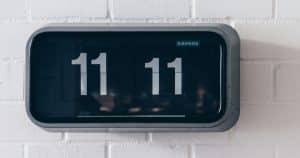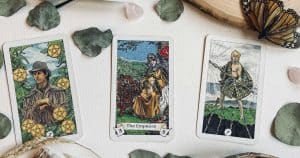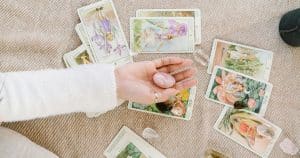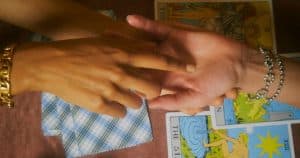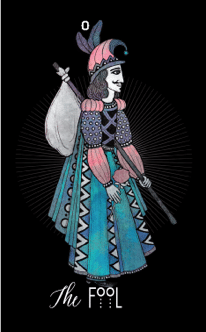One of the greatest obstacles to becoming a confident Tarot reader is simply learning the cards.
Many of my clients who want to read for themselves can’t seem to get to the place of knowing the cards. The cards have many different meanings and correspondences, and then there are also reversed definitions and reading the cards within the context of a spread. Memorizing all of this just isn’t possible—especially without doing actual readings.
The true art of reading Tarot comes from developing your own intuitive relationship with the cards, as well as gradually absorbing the historic and mystical archetypal meanings. Keeping a personal journal of your readings, impressions, and observations of the cards at work in your life is the best way to cultivate this intuitive knowledge.
Preparing Your Journal
When I instruct people to create a Tarot journal, this idea is met with all sorts of preconceptions about the “right” way to do this. There is no right way—so just lay that worry aside. You can use a spiral notebook, a special book you’ve made, or anything in between. It’s important that the pages are large enough to draw out your spreads and have room to write notes. Some clients like to make artwork in their journal; others keep their Tarot musings in the journal they use for daily reflection. Make it appealing to yourself and accessible. I like spiral bindings or softcover journals so I can fold back the cover if I want.
I like to write with a specific pen and keep colored pens or pencils handy to annotate my readings or reflections. Make journaling with your cards a ritual. The more you do it, the more magical and inspiring it will become. The journal is a great place to record your Soul and Personality cards, and whatever Year card you are working with.
A word about computer journaling: It’s not wrong (there is no wrong way to journal, remember?), but I recommend that you handwrite with pen and paper. Handwriting is very linked to the subconscious mind, and this is one place where those intuitive insights will come from. If you are wedded to your laptop, of course that is fine. But try it by hand.
A Card a Day
The best way for beginners to start is by pulling a card a day. That’s how I started, and I still often choose a card during my morning meditation. This a great way to begin your day and get grounded in your intuition. I like to sit quietly a few moments, and then slowly shuffle my deck. While I shuffle, I ask for guidance for the day; what I might need to consider or cultivate. Then I draw a card.
Though you may know the historical meaning of the card you draw, let your own intuition respond to the images. Let yourself focus softly on the card, and notice what you notice. What symbols, colors, or figures are pulling your attention? What feelings does the card stir in you? Note all these impressions in your journal.
As you go through your day, recall the energy of the card. How is it manifesting in real time? If you are working with the Death card, for example, notice if you are being asked to let go of feelings, situations, or perhaps even a relationship. Is something new wanting to be born? Are you feeling “dead” inside—why? At the end of your day, take a few moments to write down how the energy of the card appeared in your life. Even if some event doesn’t feel obviously related, but it seems to connect, make a note of that, too. This is your intuition at work.
Notice any cards that recur. One year, I drew the Strength card over and over. It was certainly appropriate for that time of life, and I developed a layered relationship with that card. Another time period saw the Seven of Swords coming up in nearly every reading. The traditional meanings just didn’t seem to apply, and this is when I developed my own relationship with that card and found an accurate meaning that works for me and my readings.
Tracking Your Readings
Write down all the readings you do for yourself and keep notes on the dates of the readings, and what your interpretations were at the time. Make quick reference to what is going on in your life, so that when you come back to this reading later, you can bring in the contextual meanings.
I like to do weekly readings for myself, and more significant, larger readings monthly or on full moons, holidays, or my birthday. Of course, if a big issue comes up in your life, you can do a larger spread anytime. I suggest that students do combinations of three-card readings for the week, yes/no readings as needed, and then big spreads like the Inner Work Spread or the Celtic Cross less frequently.
Go back to your significant readings a month or two later. Make new notes about what happened, and how the energies of the cards played out. Here is where I get out my colored pens—to make notes from different dates, writing new comments alongside the old. It is illuminating to go back to the readings even six months later, and make another set of notes. You will begin to see personal patterns, defensive structures, and themes emerge.
Of course, there isn’t a need to annotate minor readings. You will know which readings seem significant and intuitively want to go back to them. Watch for recurring cards, sequences of cards, or a predominance of numbers and suits. All of this will play a part in getting to know how the Tarot relates to you. You will be amazed, after your first few months, how doing this exercise will strengthen your confidence and fluidity in reading.
You may find yourself working with stubborn patterns, or themes that you don’t know how to address in your life. This is the perfect time to get a reading from a professional, and with them you can piece together what the cards are trying to communicate. Keen hosts a great variety of Tarot professionals to choose from. Why not check in with one today?




